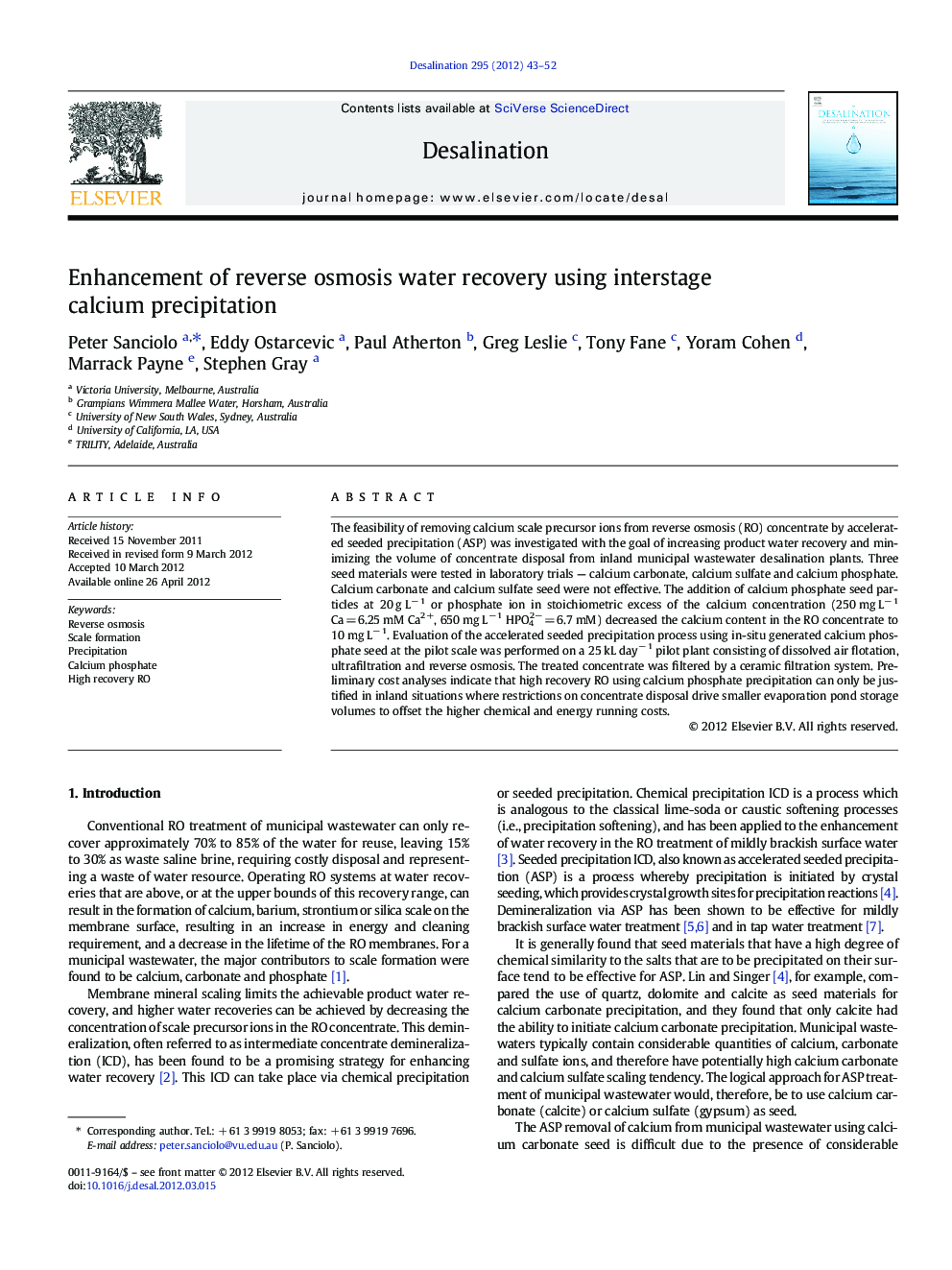| Article ID | Journal | Published Year | Pages | File Type |
|---|---|---|---|---|
| 624343 | Desalination | 2012 | 10 Pages |
The feasibility of removing calcium scale precursor ions from reverse osmosis (RO) concentrate by accelerated seeded precipitation (ASP) was investigated with the goal of increasing product water recovery and minimizing the volume of concentrate disposal from inland municipal wastewater desalination plants. Three seed materials were tested in laboratory trials — calcium carbonate, calcium sulfate and calcium phosphate. Calcium carbonate and calcium sulfate seed were not effective. The addition of calcium phosphate seed particles at 20 g L− 1 or phosphate ion in stoichiometric excess of the calcium concentration (250 mg L− 1 Ca = 6.25 mM Ca2+, 650 mg L− 1 HPO42− = 6.7 mM) decreased the calcium content in the RO concentrate to 10 mg L− 1. Evaluation of the accelerated seeded precipitation process using in-situ generated calcium phosphate seed at the pilot scale was performed on a 25 kL day− 1 pilot plant consisting of dissolved air flotation, ultrafiltration and reverse osmosis. The treated concentrate was filtered by a ceramic filtration system. Preliminary cost analyses indicate that high recovery RO using calcium phosphate precipitation can only be justified in inland situations where restrictions on concentrate disposal drive smaller evaporation pond storage volumes to offset the higher chemical and energy running costs.
► CaCO3 and CaSO4 are not suitable as seed for ASP of Ca from municipal wastewater. ► CaHPO4 is suitable as seed for ASP of Ca from municipal wastewater. ► Ceramic filtration of CaHPO4 is prone to temperature related problems.
